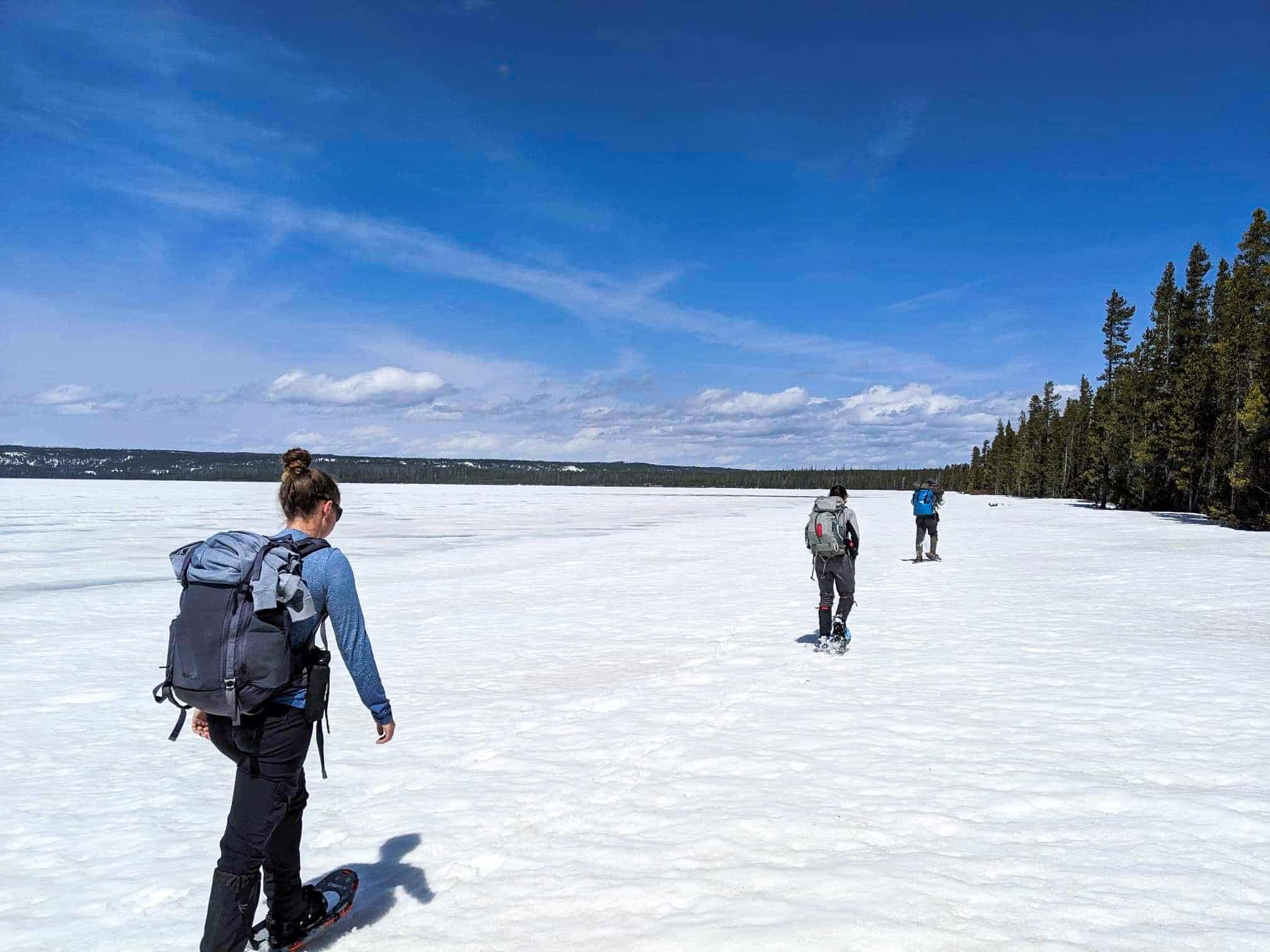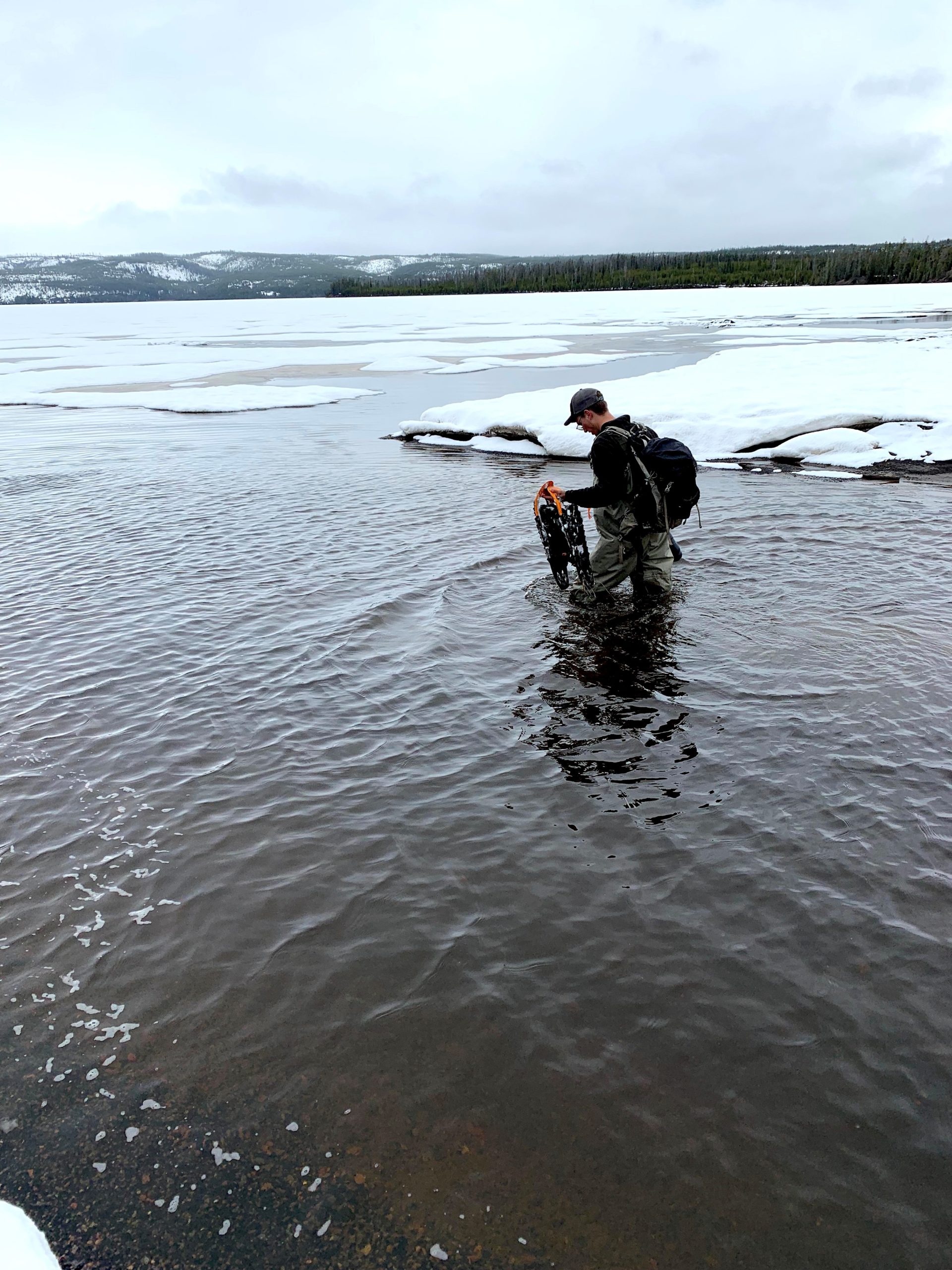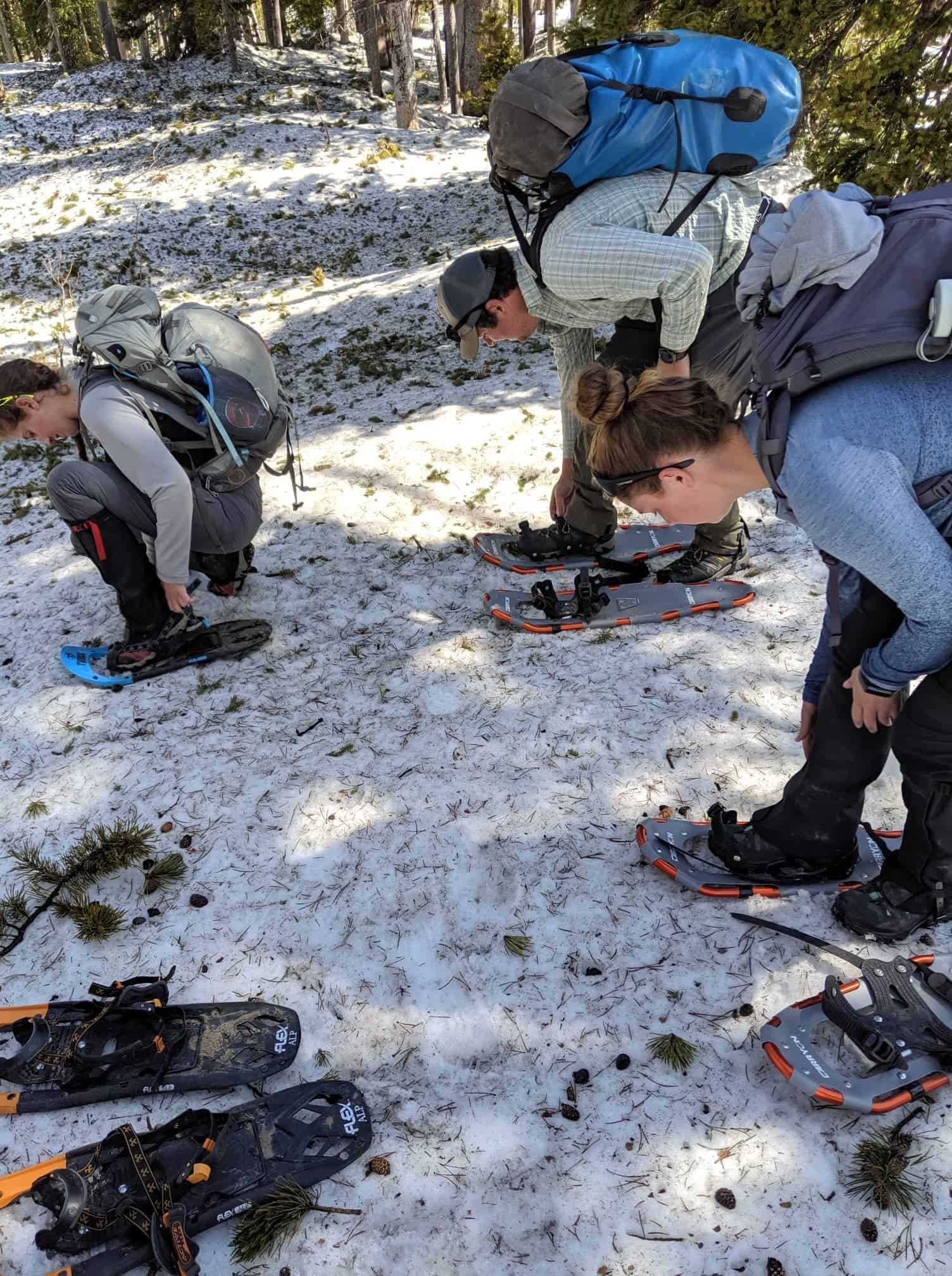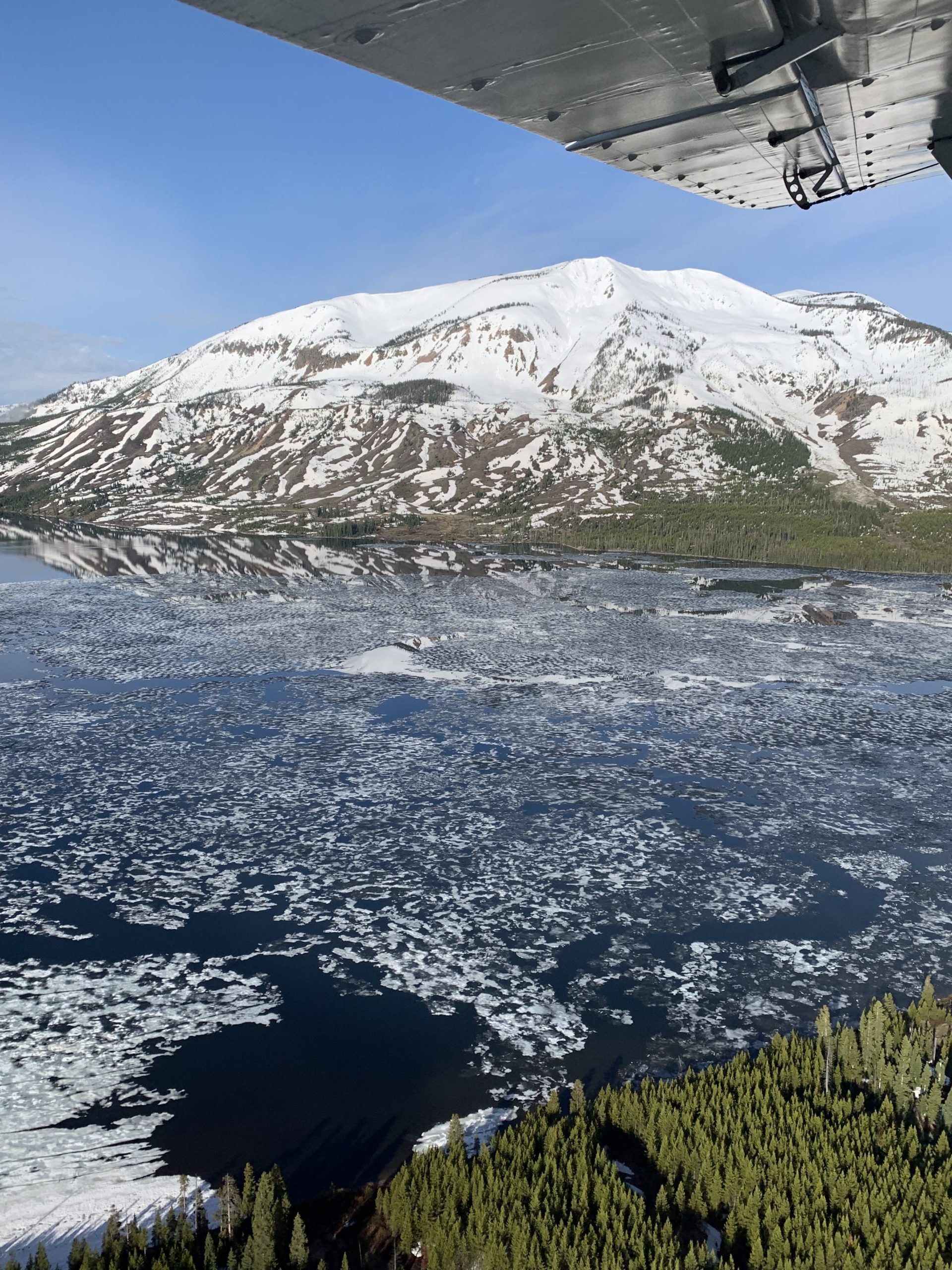When most people imagine scientific research they think microscopes and lab coats. When thinking of conservation they picture park rangers and polar bears. If people even consider loon conservation, they might imagine artificial nest rafts or aluminum fishing boats. These assumptions play a role in loon work, but when we try to study and conserve the loons of the Greater Yellowstone Ecosystem (GYE) there’s more to consider. An ecosystem of nearly 20 million acres of land[1] marbled with towering mountains and dramatic canyons, a whopping 12 feet of annual snowfall,[2] and nearly 7 million annual human visitors in its national parks alone[3,4], the GYE is flush with curveballs for the collaborative effort to monitor and protect its uniquely isolated Common Loon population.
Add in a late winter, and loon work really gets challenging. As spring blossoms and temperatures warm in April, loons make their way from comfortable southerly wintering locales along the Pacific coast to the loons’ breeding grounds in the GYE. In April of 2019, however, the GYE greeted the loons with heavily iced over lake territories and the RCF loon team with impassable roads and a solid 3 feet of snowpack. This might seem like terrible news, but thankfully, loons are proactive -- they make frequent reconnaissance flights from nearby open water to determine the ice conditions of their territories to ensure that they will be the first to (re)occupy and claim them for the breeding season. For our team, this meant incorporating snowshoes and snowmobiles into our daily hiking routines as we trudged around to monitor the breeding and nesting progress of the loons. As temperatures rose, it meant challenging half-frozen stream crossings, sometimes on snowmobiles, and frustrating guesswork with our nest disturbance camera monitoring.
What does this all mean for the loons? As an easily disturbed species, small changes to their breeding timeline can have cascading effects on nesting success and productivity. In the context of the late winter of 2019, this climatic fluctuation led to early-season congregations of loons on open areas of the larger GYE lakes. In one brief sitting that May, our crew counted nearly 40 loons on the north end of Jackson Lake, preening, resting, and feeding. Some were probably northward migrants en route to Montana, Alberta, or Saskatchewan, but there were very likely local GYE loons among them waiting for their lakes to thaw. By May 26th that year, we still had two territories completely iced over!
In 2019 the late thaw meant that loons delayed their nesting, leading to more visitors visiting lakes when loons were incubating their eggs and most vulnerable to disturbance. The late snowpack also delayed our placing signs before the loons began nesting letting people know which areas were closed to human activity. Human disturbance is frequently a suspected cause of nest failure among breeding pairs in the GYE. Because the vast majority of visitors don’t know loons are present, let alone that their recreation choices can disrupt the loons’ normal nesting patterns, it’s extremely important to have educational signs in place by May. While some nests did fail last year, the season still ended with a level of productivity that should lead to continued growth for this small population (see prior blog post “17 Is a Big Number”). Even more exciting, several territories with a history of nest failure had surviving chicks last year -- a sign that management and closures put in place by the National Park Service, United States Forest Service, and Wyoming Game and Fish Department, in collaboration with RCF, are working to conserve these charismatic birds!
While the snowfall added new challenges to the 2019 season, working in the GYE always presents obstacles -- navigating mountainous terrain, mercurial weather, unexpected delays caused by wayward bison, and last, but not least, the futile task of trying to set a schedule based on the whims of unpredictable birds. Late winter or not, in 2020 the team has entered the season prepared to run the sleds again. Here’s hoping for a hasty thaw.

RCF loon team snowshoeing to a loon territory. Photo by Charlie Southwick.

RCF staff member fording river on hike to a loon territory. Photo by Vincent Spagnuolo.

RCF loon crew using snowmobiles to access remote loon lakes. Photo by Vincent Spagnuolo.

RCF loon crew gearing up for a hike to a loon territory. Photo by Charlie Southwick.

Aerial view of lake occupied by loons in Yellowstone National Park. Photo by Vincent Spagnuolo.